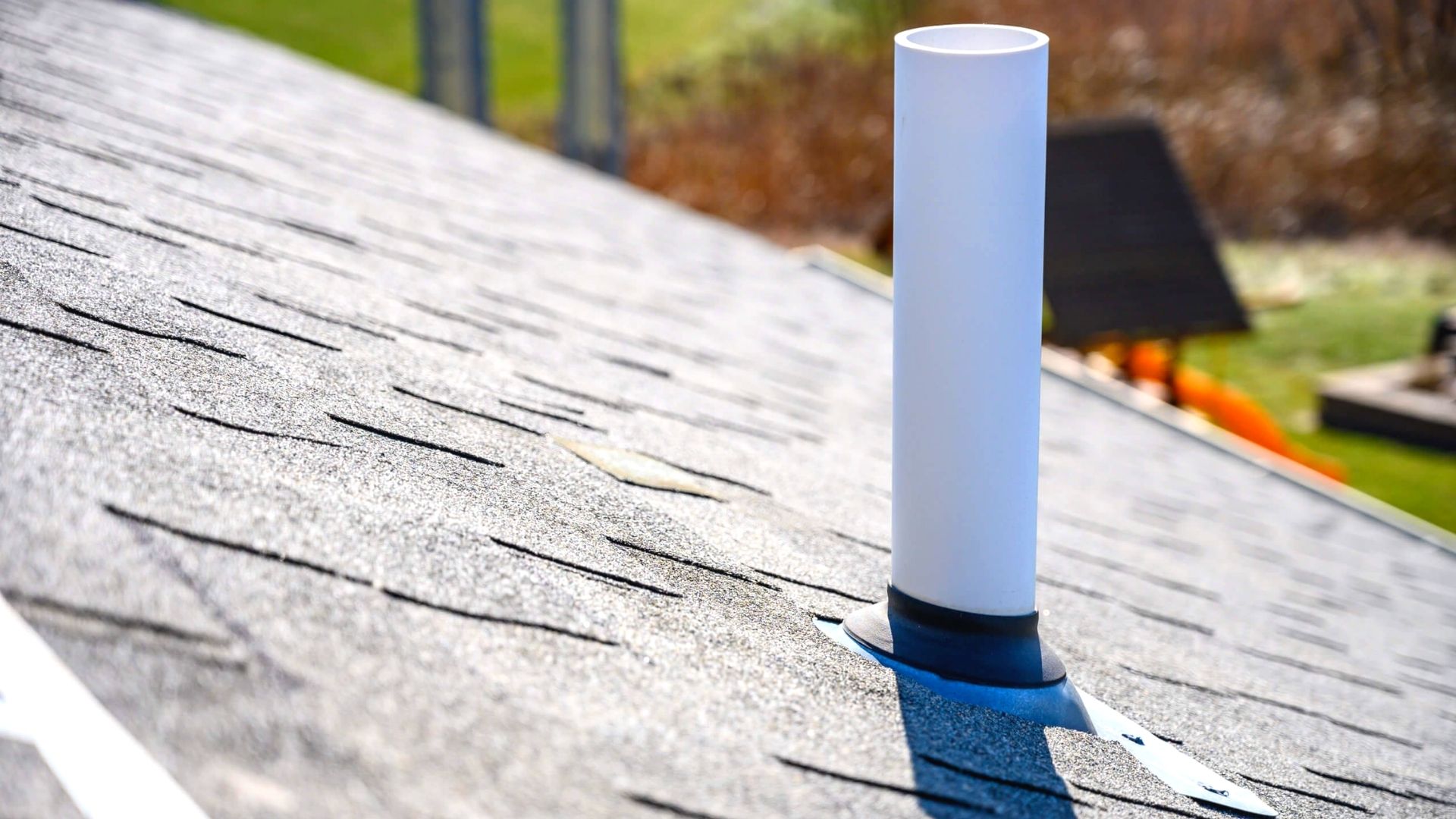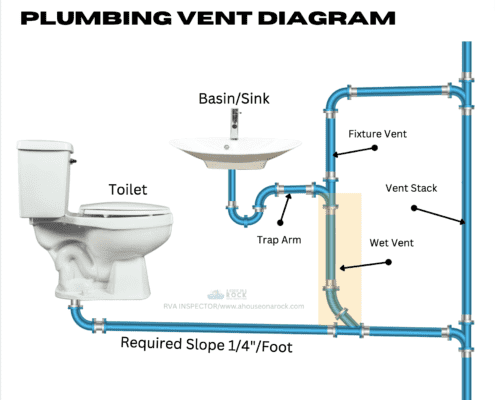The Reasons Why Adequate Ventilation is Crucial for Plumbing Systems
The Reasons Why Adequate Ventilation is Crucial for Plumbing Systems
Blog Article
Are you hunting for insight about What Are Plumbing Vents and Why Are They Important??

Appropriate ventilation in pipes systems is usually forgotten, yet it is critical for keeping the functionality and security of your home's plumbing. Air flow aids manage atmospheric pressure, prevent the accumulation of harmful gases, and guarantee the reliable removal of waste. In this overview, we will discover the relevance of proper plumbing air flow, exactly how it functions, and the advantages it brings to your pipes system.
How Air Flow Functions in Pipes Systems
Air Pressure Regulation
Correct air flow preserves balanced atmospheric pressure within the pipes system. When water moves with pipes, it displaces air. Without ample ventilation, this variation can create adverse stress, resulting in slow drains or siphoning of water from traps, which can cause undesirable smells to permeate right into the home.
Avoiding Sewer Gas Build-up
One of one of the most important functions of plumbing vents is to prevent drain gases, such as methane and hydrogen sulfide, from accumulating within the home. These gases can pose major wellness dangers and are very combustible. Vent pipelines enable these gases to leave securely outdoors.
Assisting in Waste Removal
Air flow assists in the effective removal of wastewater by avoiding airlocks in the water drainage system. When air can move openly with the vents, it enables water and waste to move efficiently with the pipelines, reducing the danger of blockages and back-ups.
Advantages of Appropriate Ventilation
Enhanced System Effectiveness
Properly aerated pipes systems run much more efficiently, with fewer blockages, faster draining, and less strain on the pipelines. This performance prolongs the life-span of the pipes system.
Improved Air Top Quality
By avoiding drain gases from entering your home, appropriate air flow adds to far better interior air top quality, making your living environment healthier and a lot more comfortable.
Preventing Water Damages
Appropriate air flow assists prevent water from being siphoned out of catches, which can result in sewer gases entering the home and creating water damages gradually.
Actions to Guarantee Correct Ventilation
Consulting Plumbing Codes
Constantly consult regional pipes codes when developing or changing your plumbing system. These codes give the essential standards for appropriate venting and ensure your system meets safety and security requirements.
Routine Examination and Upkeep
Normal inspections can aid recognize prospective ventilation concerns before they end up being significant issues. Upkeep jobs, such as cleansing vent pipes and checking for obstructions, are vital for maintaining the system in good working order.
Expert Installation
For new installments or major adjustments, it's wise to hire a specialist plumbing. They have the expertise to make certain the ventilation system is correctly made and mounted according to code.
Recognizing Air Flow in Pipes
Ventilation in plumbing refers to the network of pipes that allow air to stream with the drainage system. These vents serve numerous objectives, consisting of controling air pressure within the pipelines, preventing sewer gases from going into the home, and aiding in the smooth flow of wastewater.
Types of Plumbing Vents
Main Heap Vent
The primary pile air vent, likewise known as the air vent pile, is the primary vent in a plumbing system. It expands from the main drain align through the roofing system, permitting gases to run away and fresh air to get in the system.
Branch Vent
Branch vents link to the major stack vent and serve individual components, such as sinks, toilets, and showers. These vents ensure that each fixture has ample air flow to operate properly.
Air Admittance Valve (AAV).
An Air Admission Valve (AAV) is a one-way shutoff that enables air to go into the plumbing system without the need for a traditional vent pipe extending with the roofing system. AAVs are commonly used in improvements or areas where mounting a conventional air vent is impractical.
Indications of Poor Ventilation in Plumbing.
Slow Draining Fixtures.
If your sinks, bathtubs, or bathrooms are draining pipes gradually, it could be an indicator of inadequate air flow. Inadequate air circulation can create a vacuum cleaner effect, making it challenging for water to drain appropriately.
Gurgling Sounds.
Gurgling audios coming from drains pipes are usually an outcome of air being drawn through water traps as a result of unfavorable stress in the pipelines. This is a clear indicator of insufficient air flow.
Undesirable Smells.
Sewage system odors inside your home are a warning that your plumbing system is not correctly ventilated. This can suggest that sewer gases are not being properly aired vent outside, bring about potentially hazardous problems.
Typical Air Flow Mistakes.
Insufficient Vent Sizing.
Making use of undersized air vent pipelines can result in inadequate air circulation and stress imbalances in the system. It's necessary to make use of vents that meet the certain needs of your pipes system.
Improper Vent Placement.
Positioning vents also much from the components they offer can minimize their effectiveness. Correct positioning makes sure that air can move openly and successfully via the system.
Ignoring Code Needs.
Building regulations provide certain standards for plumbing ventilation. Neglecting these codes can lead to a system that fails to operate appropriately and might lead to expensive fixings or health hazards.
Final thought.
Correct ventilation is an important component of any pipes system, ensuring that it operates efficiently and securely. By recognizing the relevance of air flow, acknowledging the signs of bad ventilation, and taking steps to maintain your system, you can protect against pricey problems and protect your home's air quality.
What is a Plumbing Vent and it's used for?All plumbing systems in residential and commercials construction have a plumbing vent. It doesn’t just vent unwanted odors from the drainage system to the outside; it actually serves an important purpose by supplying air to the system.
The plumbing drainage system is actually called a drainage, waste and vent (DWV) system. When water flows down the piping, an air supply (vent) is needed to allow the water to flow. Think of the vertical pipe as a drinking straw. If you plug the top end of a straw, liquid won’t drain from it.
The DWV system in your building consists of a series of pipes connected to each fixture; they extend above each fixture, and the system terminates at an open pipe that extends through the roof. This piping allows air into the system and prevents unbalanced pressures in the piping.
?The vent also prevents the system from drawing water out of a trap at the fixture with the characteristic “glug-glug-glug” as the drain gasps for air. Plumbing traps should drain smoothly and never “glug” or gasp for air.
If you have a drain that empties slowly or gurgles as it drains, this may indicate a venting problem. If you flush a toilet and the sink gurgles, there’s definitely a vent problem. It is good idea to have a Plumber check this.
https://www.ameliashomeinspection.com/blog/what-is-a-plumbing-vent-and-its-used-for

As a fervent person who reads about What Are Plumbing Vents and Why Are They Important?, I figured sharing that piece of content was a great idea. Do you know another individual who is fascinated by the topic? Be sure promote it. Thanks a lot for your time invested reading it.
Schedule Report this page